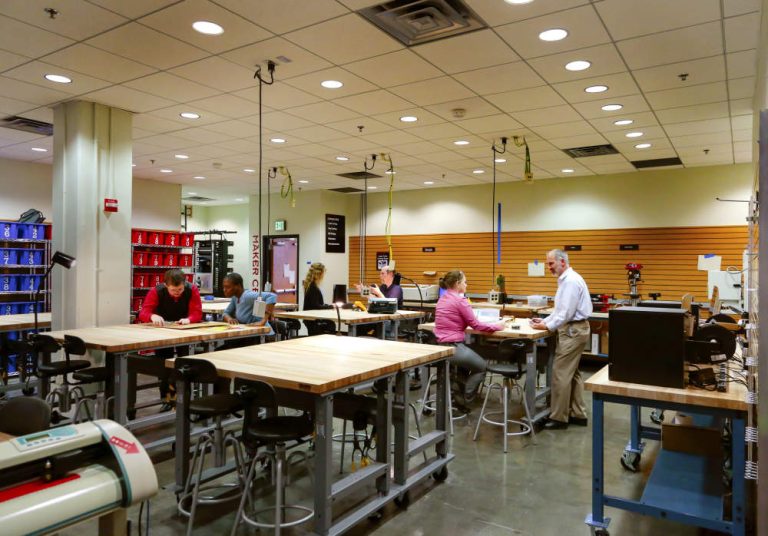Montgomery County, MD Schools and Colleges Provide Highly Educated Workforce
Discover how a top-ranked public school system and choice of higher education options, like Johns Hopkins University and Montgomery College, help boost workforce and economic development.

Efforts to develop a highly educated and skilled workforce in Montgomery County begin long before college. Montgomery County Public Schools is one of the highest performing school districts in the country. The district’s graduation rate – one of the highest in the nation – has increased every year for the last four years and continues to surpass the national average.
“It really starts at the beginning [of primary education] with programs like our early reading program,” says Brian Edwards, chief communications officer for Montgomery County Public Schools. “We start equipping our students early with critical thinking, creative thinking and problem solving, so they’re learning the skills they need to be successful in college, in their careers, and in life.”
Partners in Progress
The school system has a strong focus on STEM (science, technology, engineering and math) and provides even the youngest students hands-on, practical experiences in the classroom. Edwards says these experiences help children learn how to solve difficult problems and instills the determination and “grit to persevere.” Edwards says being located in Montgomery County, which is home to dozens of technology and life sciences companies, as well as research institutions and major federal agencies, such as the National Institutes of Health, allows the school system to build relationships and draw upon that expertise to give students more opportunities.
“In middle school science, for example, we have a partnership with the Carderock Naval Sea Systems Command where navy scientists come into our schools and teach kids how to build submersibles. Then students are able to go to the naval center and try out their submersible devices in their big tank,” he says. Those partnerships between educators and the business community continue at the post-secondary education level. The Center for Biotechnology Education at Johns Hopkins University Montgomery County Campus takes the pulse of the growing biotech industry to ensure students get the skills they need to land jobs. The campus offers master’s degrees in biotechnology, bioinformatics, education, business, regulatory science, enterprise and entrepreneurship, as well as a joint degree in biotechnology and business administration, which was developed in response to the demand for leaders who understand both the science and business of biotechnology. “Many of our classes are taught by industry professionals, providing students a chance to network with those in business, and for the instructors – who are often employers – to identify possible new hires for their companies,” says Ellen Poltilove, communications and media relations manager for Johns Hopkins Montgomery County Campus.
Building a Stronger Talent Base
Continuing education is another major component of the county’s workforce development efforts. With an average student age of 24 in the degree programs and 36 in the noncredit programs, most of the 60,000 students served each year at Montgomery College are working adults focused on advancing their careers.
Montgomery College offers career-focused programs in more than 100 fields as well as contract training for local employers, trade associations and community organizations.
“More than 5,000 employees of local organizations are in customized training programs designed around the employers workplace needs each year,” says George Payne, vice president, workforce development and continuing education at the college. “Additionally, the college provides related instruction for apprenticeship programs in building trades and automotive technician areas.”
Montgomery College also provides traditional students with a pathway to a four-year degree. In fact, 75 percent of undergraduate students at the Universities at Shady Grove (USG) – a campus community offering degree programs from nine institutions within the University System of Maryland – transfer from Montgomery College. USG is a major contributor to the county’s workforce development efforts, with more than 88 percent of graduates pursuing careers in the region. That’s a statistic MCPS’ Brian Edwards says is vital to the county’s economic growth. “We want to make sure our county continues to thrive and be a place of innovation with a strong economy,” Edwards says. “To do that, we need to create a system that produces top-quality graduates who get an excellent education beyond MCPS, and then go to work for our local companies and government agencies and become thriving, successful citizens.”
